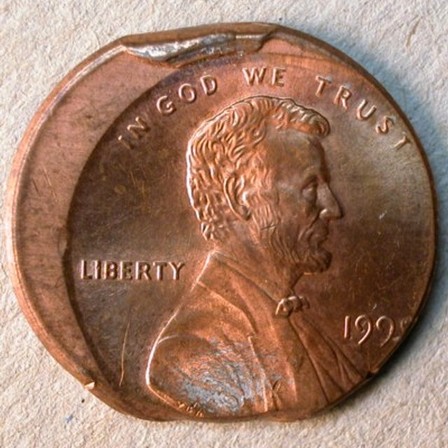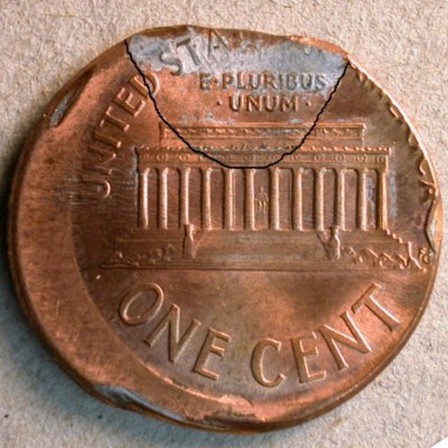Part VI: Striking Errors:
Foldover Strikes
Definition: A foldover strike is a planchet or coin that is folded in half when it is struck on-edge. The planchet or coin can enter the striking chamber spinning on its edge. It can be kicked into a vertical position by the feeder finger or ejection arm. It can roll into the striking chamber on its edge. Or it can be caught in mid-flight by the descending hammer die. However it occurs, the planchet or coin is bent in two.
A fold can run through the center of the coin (an axial fold) or can be located toward one pole (a paraxial old). If the vertically-oriented planchet was caught somewhere toward the periphery of the striking chamber, it can fold away from, or toward the interior of, the striking chamber.
The cent shown below was struck sometime in the 1980’s. It is an in-collar foldover strike. It’s very rare for a foldover strike to be struck in-collar. This is because the coin has to be at the very edge of the striking chamber when struck, must fold perfectly in half, and must fold toward the interior of the striking chamber.
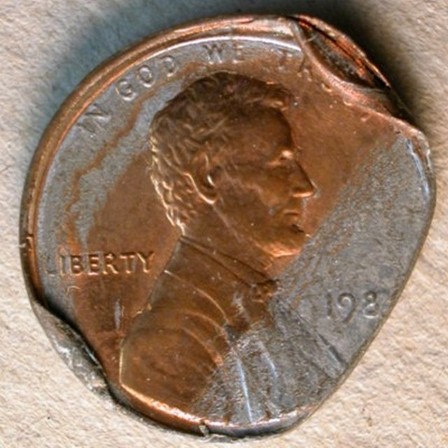
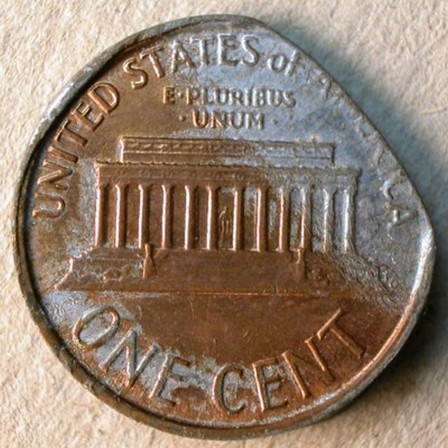
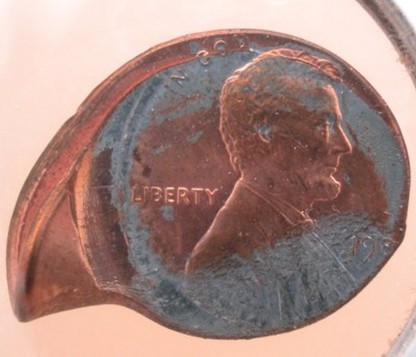
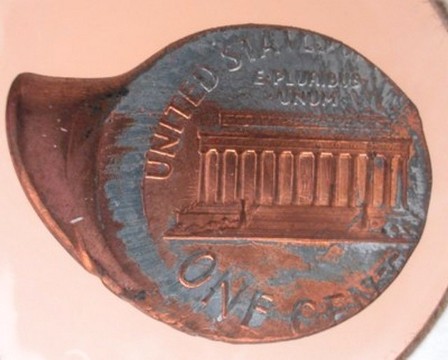
A 1999 cent shows a small paraxial fold embedded in the reverse face. The margin of the flap is highlighted in black. The opposite pole shows an edge strike.
